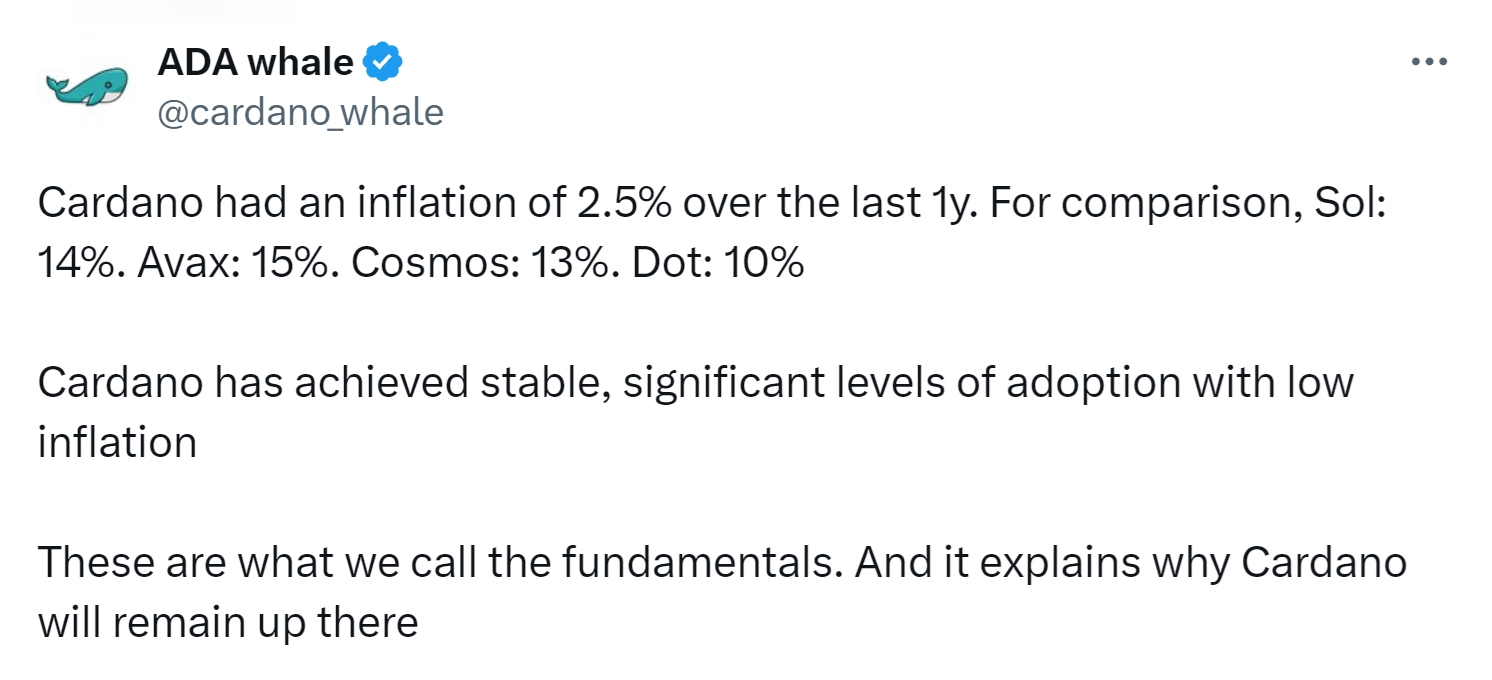2024-08-11

Cardano (ADA), a prominent
proof-of-stake cryptocurrency, has an inflation rate of 2.5% over
the last 12 months. Cardano's inflation rate had been around 4-5% annually
in recent years.
This rate is significantly lower
compared to other major cryptocurrencies—6 times lower than Avalanche (AVAX)
and 4 times lower than Polkadot (DOT).

The Cardano community views this low
inflation rate as a testament to ADA’s economic stability and a factor that
positions it a sound money. Despite the low inflation, Cardano tries to make itself achieve stable and significant levels of adoption. It currently has $203 million in total value locked.
Bitcoin (BTC), known for
its scarcity, has an rate of 0.86% after the 2024 halving,
while Ethereum (ETH) demonstrates twice the inflation rate of Cardano.
Cardano (ADA) inflation model
For Monetary Policy, Cardano has
a fixed total supply cap of 45 billion ADA. Initially, a large portion of this
was distributed during the Initial Coin Offering (ICO), with the remainder set
aside for future issuance.
For New ADA Creation, ADA is
gradually introduced into the ecosystem through a process of minting, which is
primarily done as staking rewards.
These rewards are given to stakers
(those who lock up their ADA to help validate transactions) and stake pool
operators (who manage the staking pools).
The staking rewards are a combination of new ADA (inflation) and transaction fees. A portion of each block reward comes from the remaining ADA that has not yet been minted.
Unlike some cryptocurrencies with an
unlimited supply, Cardano's inflation is controlled and diminishes over time.
The rate at which new ADA is created
decreases gradually, following a decay function that ensures a decreasing rate
of inflation as the total supply approaches the maximum limit of 45 billion
ADA.
As of August 11, 2024, ADA has
circulating supply of 37,116,609,474 ADA.
The controlled inflation rate of
Cardano is seen as a “sweet spot” in the crypto world, attracting investors
looking for a balance between adoption and scarcity.